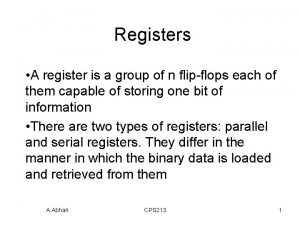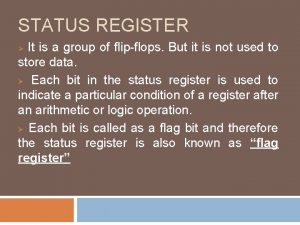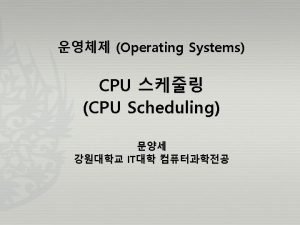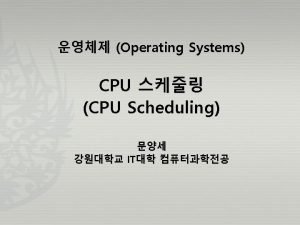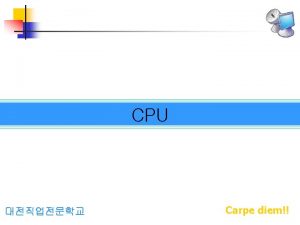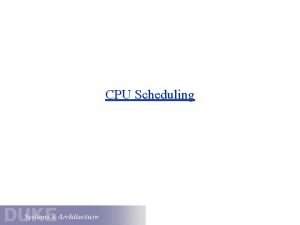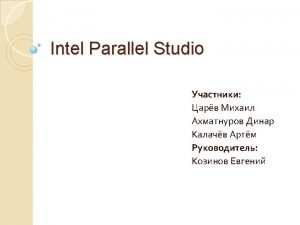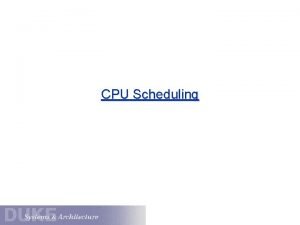CPU Register Register Register is a Group of








- Slides: 8

CPU Register

Register • Register is a Group of Flip-flops that used to store a Data/Address/Instructions during process. • Register may be 8, 16, 32, 64, 128 bits • Register is High Speed temporary storage space for data. • Registers are directly access by Name.

CPU Register • Two types of CPU registers – Special Purpose Register • Program Counter (PC) • Instruction Register (IR) • Memory Address Register (MAR) • Memory Data Register (MDR) • Accumulator – General Purpose Register

Special Purpose Register • Program Counter – Used to store next instruction address. • Instruction Register – Used to store current execute instruction. – Control Unit (CU) access the IR and send control signal to ALU, Memory

Special Purpose Register • Memory Address Register (MAR) – MAR hold the main memory address (To or From) data is to be transferred. • Memory Data Register (MDR) – MDR contain the data to be read from or written to the address of main memory. • Accumulator (AC) – It store the result generated by ALU.

Program 101 Load 102 Add 103 Mult 104 Store IR Add PC 103 Memory Address (1010) Data (11) MAR 1010 MDR 11

General Purpose Register • General purpose register store data, address • It is Multi purpose register • Access time of register is lowest. • Most frequent data / instruction stored in GPR • CPU has 8 GPR and each register store 32 bits information • 16 bits or 8 bits data can store in GPR

General Purpose Register • 32 bits data store then Register Name is – ER 0 , ER 1, …ER 7 • 16 bits data store then Register Name is – E 0 , E 1, …E 7 , R 0, R 1, … R 7 • 8 bits data store then Register Name is – R 0 H, R 0 L, R 1 H, R 1 L, … R 7 H, R 7 L

